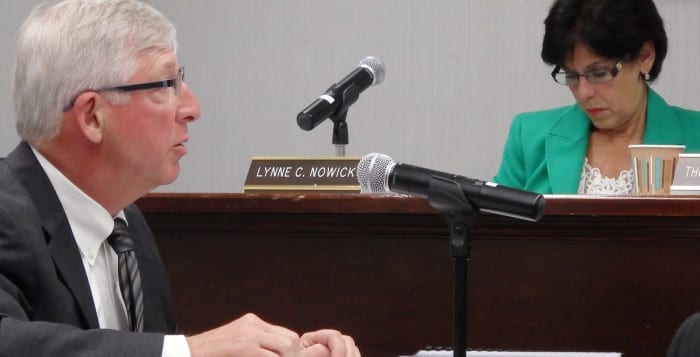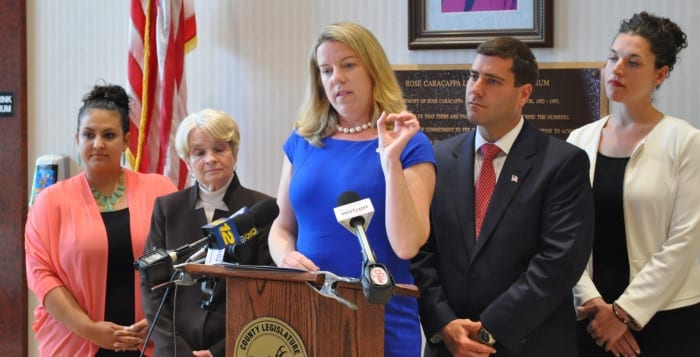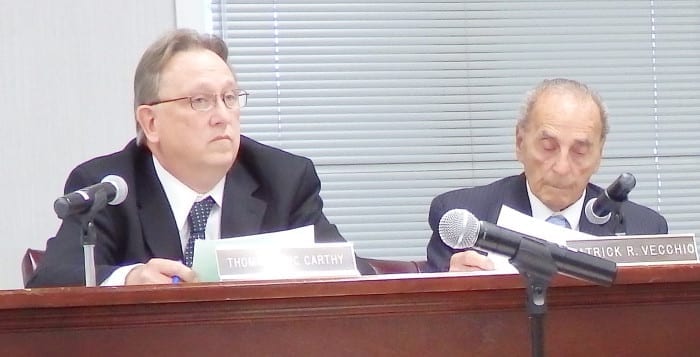In a short and not very sweet memo, Smithtown’s supervisor called out the superintendent of highways.
Pat Vecchio (R) said he felt Glenn Jorgensen should resign from his post amid a slew of accusations surrounding his performance on the job, including an alleged sexual harassment scandal and various felony charges against Jorgensen regarding road paving projects late last year. The letter came after the supervisor learned Jorgensen, 63, had allegedly taken his personal secretary out to a job site.
Vecchio’s memo included an attachment from the Suffolk County Civil Service Department, which explicitly outlined the job description of the secretary to the highway superintendent and did not include on-site work.
“It is my understanding that today, May 13, 2015, you had [a] secretary accompany you to a job site,” the memo said. “It seems to me that you are either not comprehending why the position exists, you have a disregard for civil service law or you are mocking the town board and the public.”
Town records showed that Jorgensen, who could not be reached for comment, hired Kaitlin Swinson as his new secretary in late January. Her position had initially been terminated back in February when the town board voted unanimously to rescind the $38,000 allocated for her job, but later reinstated her position in a 3-1 vote in March. She could not be reached for comment.
The highway superintendent has been at the center of controversy for several months now since a notice of claim was filed against the town in December alleging he had sexually harassed his former secretary, Aimee-Lynn Smith, 27. The claim also alleged Jorgensen had taken her out to job sites, out to eat and eventually fired her after finding out she was dating an employee of the highway department.
Jorgensen, of St. James, was also slapped with separate charges accusing him of tampering with public records for a town paving project, Suffolk County District Attorney Thomas Spota said.
Jorgensen pleaded not guilty to the four felony charges and the misdemeanor in April.
The district attorney alleged that Jorgensen directed a highway foreman to alter road construction reports to conceal that he had approved a contractor, Suffolk Asphalt Corp. of Selden, to pave at least eight Smithtown streets in freezing temperatures in November. The altered records misrepresented the weather conditions during the repaving work, Spota said.
Jorgensen’s misdemeanor grand larceny charge also accused him of stealing a public work order for the improper repaving and taking the official document home. District attorney detectives found the records in Jorgensen’s Hope Place residence, under his bed, Spota said.
“State department of transportation construction standards dictate asphalt must not be applied to a road surface in freezing temperatures and, in fact, the town’s own engineer has said repaving in freezing weather would result in the asphalt falling apart,” Spota said. “The repaving of a residential street doesn’t happen that often and when it does, residents are paying for a job done correctly, not a faulty repaving that will soon need pothole repair work.”
Smithtown Democratic Committee Chairman Ed Maher also called for Jorgensen’s resignation back in April after the charges surfaced, calling the taxpayers funding of his salary an outrage.
















